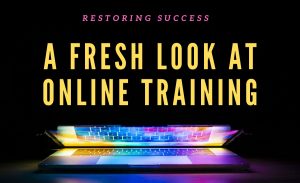 Owning a company is a large responsibility. To be successful, there is a need for organization, structure, and efficiency. Not only do you need to keep track of individual client’s and the work that is being done for them, but you also need to know where your equipment is, how long it is going to be there, which trucks have scheduled maintenance, which employees need recertifications….the list goes on and on.
Owning a company is a large responsibility. To be successful, there is a need for organization, structure, and efficiency. Not only do you need to keep track of individual client’s and the work that is being done for them, but you also need to know where your equipment is, how long it is going to be there, which trucks have scheduled maintenance, which employees need recertifications….the list goes on and on.
Imagine managing your company with software that easily helps you keep track of all this information and more. iRestore’s software management designed for restoration companies does this and works with individual restoration companies to keep track of important information, necessary documents, and communicate with co-workers from one device.
Expert Advantages In The Restoration Industry
Restoration management software like this has given expert advantages to those working in the restoration industry.
Keep Track Of Certifications – You don’t have to fall behind ever again on employee and business certifications. The Human Resource System organizes all employee-related documents, such as applications, certifications, forms, and more, in one location that is easy to access and easy to use.
Monitor Business Credit Cards And Other Business Property – Efficient business property tracking is essential if you want to stay ahead of your competition. Say good-bye to the days of replacing missing credit cards, office and vehicle keys, or important documents. High-quality restoration management software allows you to keep track of this information so that you can stay one step ahead.
Equipment Tracking – Restoration companies often receive phone calls from clients informing them that equipment was left behind in their homes. As a business owner, you might worry about how often this happens and about losing money on property loss. iRestore’s Restoration Management Software provides tracking of equipment so that you always know where equipment is and how long it is scheduled out. The iRestore Barcode system creates consecutive scanning, allowing for fast and efficient equipment transfers. Keep track of equipment’s serial number, purchase date, price, and more. This also gives a leg up when planning and scheduling your next project.
Manage Job Operations – Restoration Management Software wouldn’t be just that if it didn’t allow you to manage actual job operations. This software collects job information, pictures, notes, equipment records, and billing. This unique system allows you to track profitability and is equipped with an interactive map for your convenience. You can quickly track job-related contacts like subcontractors and insurance adjusters and connect with the people that you need faster.
In the restoration industry, time is money. When you rely on detailed and thorough restoration management software to help you maintain order in your company, you are on the pathway to success. Successful restoration management software should be designed to help you save time, save money, and perfect the operations of your company. The many facets of a restoration company require a unique system that compliments to safeguard and protect business owners. To learn more about how iRestore’s Restoration Management Software can add value to your company, call and request a demo.

 Online training, e-learning, virtual classrooms, and other terms are becoming a new norm. In the landscape of education, there are limitless resources that are accessible to us and applicable to a variety of disciplines from technical to soft skills. Although there is a new light, none of this is new. As we operate and adjust to a world stricken by the challenges and changes brought on by the pandemic, in last month’s restoring success,
Online training, e-learning, virtual classrooms, and other terms are becoming a new norm. In the landscape of education, there are limitless resources that are accessible to us and applicable to a variety of disciplines from technical to soft skills. Although there is a new light, none of this is new. As we operate and adjust to a world stricken by the challenges and changes brought on by the pandemic, in last month’s restoring success, 


 In the early 2000s, when I was just beginning my career as a restorer, I recall the buzz about the “cloud”. I am by no stretch a “computer geek” but it sounded like something exciting. Wanting to constantly employ the latest technology in all aspects of the business, I ran around the office declaring that we needed a cloud (totally clueless of what that meant). I came in one morning to a picture of a cloud on my door labeled, “Lisa’s Cloud”. Fast forward to 2018, I became co-owner and VP of Operations Design of iRestore, a cloud-based restoration management software company. It began when I was searching for the right cloud-based system for my company. I found
In the early 2000s, when I was just beginning my career as a restorer, I recall the buzz about the “cloud”. I am by no stretch a “computer geek” but it sounded like something exciting. Wanting to constantly employ the latest technology in all aspects of the business, I ran around the office declaring that we needed a cloud (totally clueless of what that meant). I came in one morning to a picture of a cloud on my door labeled, “Lisa’s Cloud”. Fast forward to 2018, I became co-owner and VP of Operations Design of iRestore, a cloud-based restoration management software company. It began when I was searching for the right cloud-based system for my company. I found 
 In the restoration industry, being on-call in some capacity is part of the job. In recent years, many seem to view the commitment to being on-call as a drawback rather than part of responsibility and reward that a career in restoration offers.
In the restoration industry, being on-call in some capacity is part of the job. In recent years, many seem to view the commitment to being on-call as a drawback rather than part of responsibility and reward that a career in restoration offers.






